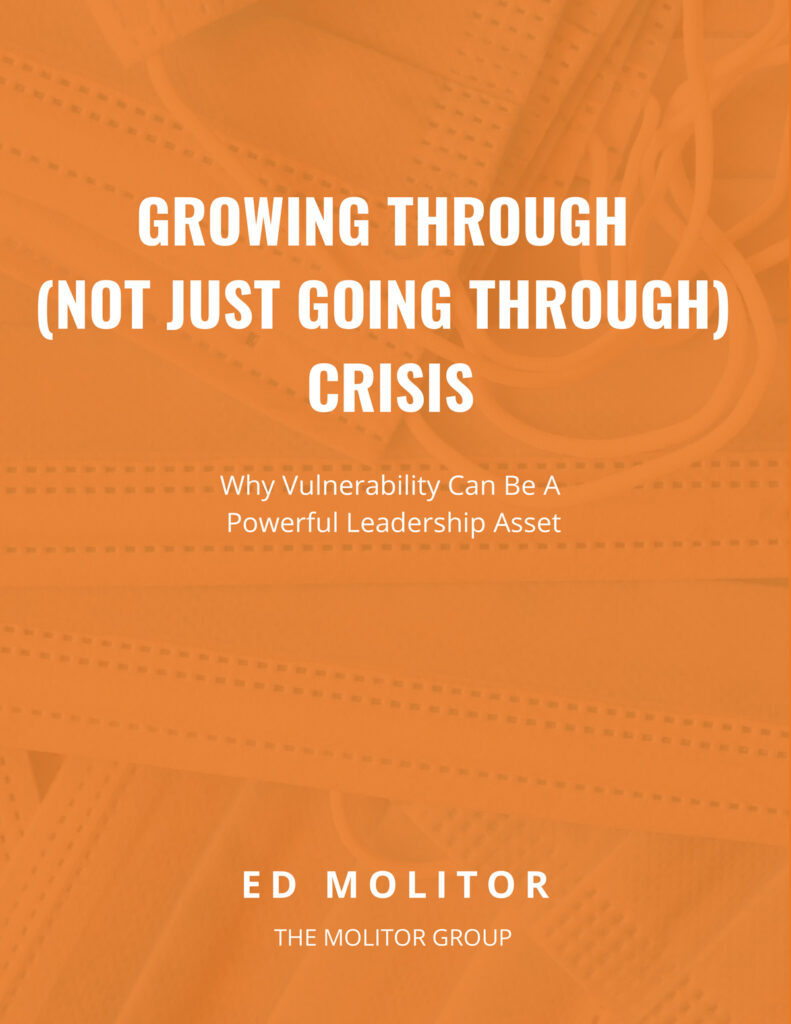Vulnerability is a desirable trait in leaders during times of chaos and crisis. But what does being vulnerable mean and how can showing vulnerability be an asset for your team?
In the past, leaders have strived to demonstrate strength and infallibility and avoid showing their vulnerability. They don’t want to be seen as weak, indecisive, or lacking in courage. But there is a problem with that approach — denying vulnerability can lead to detachment from your team. To maintain a genuine link with your team, it’s important not to hide behind a facade or appear to be a fake.
Vulnerability is made up of several vital qualities.
- Authenticity
- Trust
- The ability to admit you don’t have all the answers
- A willingness to ask for help when it is needed
Trust is the main ingredient of vulnerability, and also its end result. To show vulnerability, you have to trust those around you, and in showing vulnerability you strengthen the trust bond with your team.
I fiercely believe in the power of trust and talk about the concept with many inspirational business leaders on The Athletics of Business podcast. Leaders need to start from a place of believing in people, people have good intentions, so we start from a place of trust. Trust, like vulnerability, is a two-way street that moves across all levels of an organization. By showing vulnerability, you not only show your trust in your people but you earn their trust in return.
Trust is the glue that binds an organization together, but trusting in your people doesn’t mean turning a blind eye to problems, and it doesn’t mean that as a leader you will never need to correct individuals’ course at times. Trust means believing that the members of your team have your organization’s success in mind — trust will be needed for leaders to be able to steer their companies through the new business landscape. When you combine openness, authenticity, vulnerability, and compassion, you instill a sense of trust in your team that will help you grow through, not just go through, these challenges together.
Authenticity and Trust
People today expect their business leaders to be authentic, and that is an essential part of building a trusting relationship. Trust is a byproduct of authentic leadership, and it is the cornerstone of every relationship, but you don’t get trust without authenticity. Your employees appreciate it when you admit that you don’t have all the answers and value your vulnerability when you are prepared to ask for help.
As a leader, you owe it to yourself, your company, and your employees to use every tool and resource you have available to make the most informed decisions. When you ask for help from your team you aren’t showing weakness, you’re demonstrating that you are putting the company’s best interests first.
What Does Being Vulnerable Look Like?
- Being direct
- Acknowledging challenges
- Living your company’s values, and aligning your words, actions, and values with them
- Show respect when your team are offering you advice
- Having trust demonstrated through showing your vulnerability — people can sometimes confuse transparency with vulnerability, but they are not the same thing. Transparency is being open about why you have made the decisions you have made. Vulnerability is the opposite of the old-style “command-and-control” leadership method, while command-and-control leaders can still be transparent in their decision-making they are not always vulnerable. Keep these distinctions in mind.
- Being transparent and open about why you have made the decisions you have made
Overall, vulnerability is about asking for help and seeking outside perspectives before you decide on your ultimate path.
Being vulnerable doesn’t mean you have to be indecisive as a leader, or that you can’t make your own decisions. It’s simply about being open to new and outside information that others can give you. The strength that lies in being vulnerable as a leader is gathering all of the resources available to you, and then using them to make a more informed decision. A vulnerable leader is still a leader, but they are allowing themselves to use all the tools
and ideas at their disposal to inform their final decisions as they move forward.
I’d love to share more information, experience, and insight into what does being vulnerable mean? So if you are interested in knowing more about how to develop your leadership skills further, check out some of my other blog posts, or tune in to The Athletics of Business podcast, where I discuss all aspects of leadership with so many amazing business leaders.



